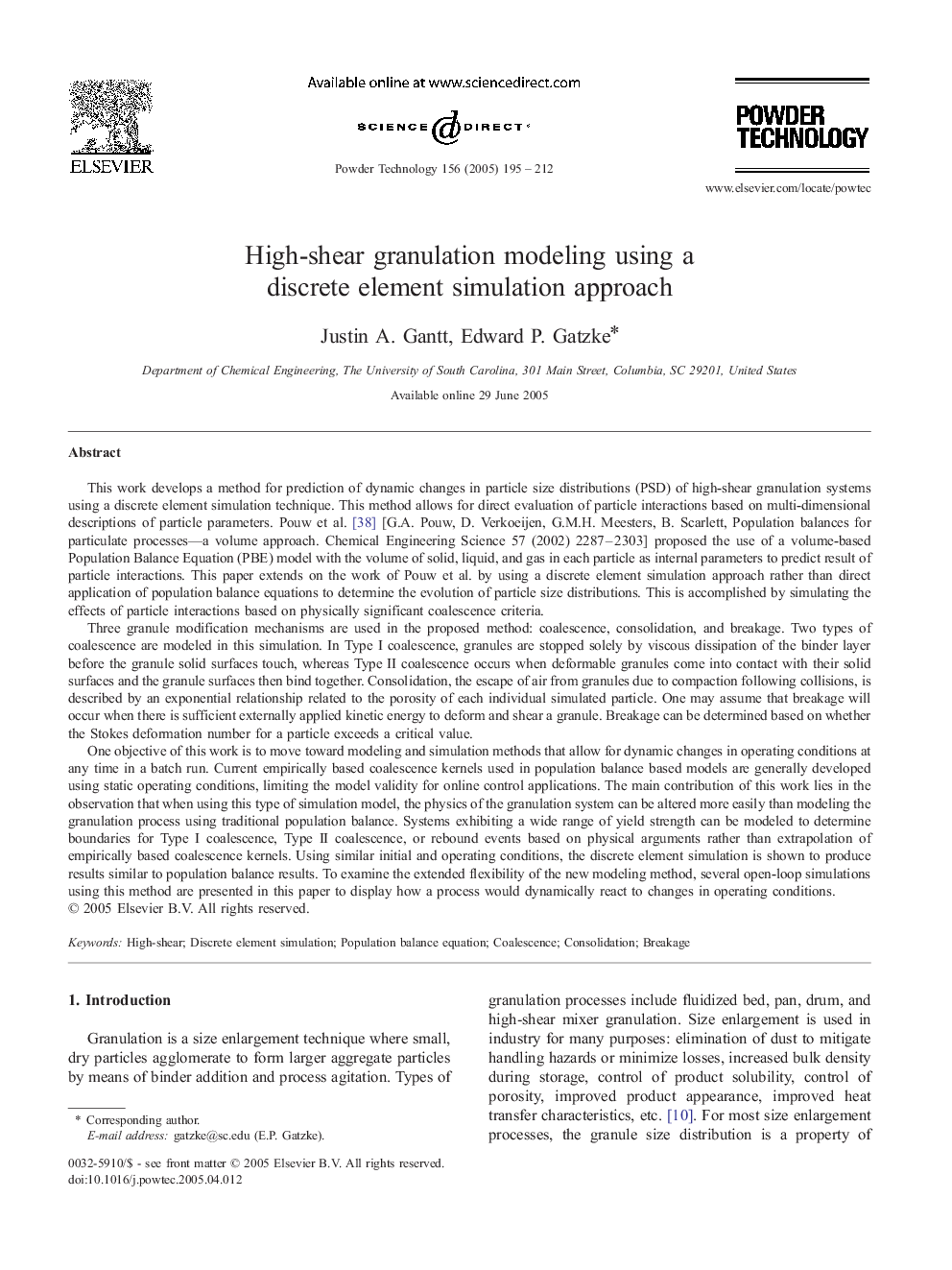| Article ID | Journal | Published Year | Pages | File Type |
|---|---|---|---|---|
| 9636492 | Powder Technology | 2005 | 18 Pages |
Abstract
One objective of this work is to move toward modeling and simulation methods that allow for dynamic changes in operating conditions at any time in a batch run. Current empirically based coalescence kernels used in population balance based models are generally developed using static operating conditions, limiting the model validity for online control applications. The main contribution of this work lies in the observation that when using this type of simulation model, the physics of the granulation system can be altered more easily than modeling the granulation process using traditional population balance. Systems exhibiting a wide range of yield strength can be modeled to determine boundaries for Type I coalescence, Type II coalescence, or rebound events based on physical arguments rather than extrapolation of empirically based coalescence kernels. Using similar initial and operating conditions, the discrete element simulation is shown to produce results similar to population balance results. To examine the extended flexibility of the new modeling method, several open-loop simulations using this method are presented in this paper to display how a process would dynamically react to changes in operating conditions.
Keywords
Related Topics
Physical Sciences and Engineering
Chemical Engineering
Chemical Engineering (General)
Authors
Justin A. Gantt, Edward P. Gatzke,
